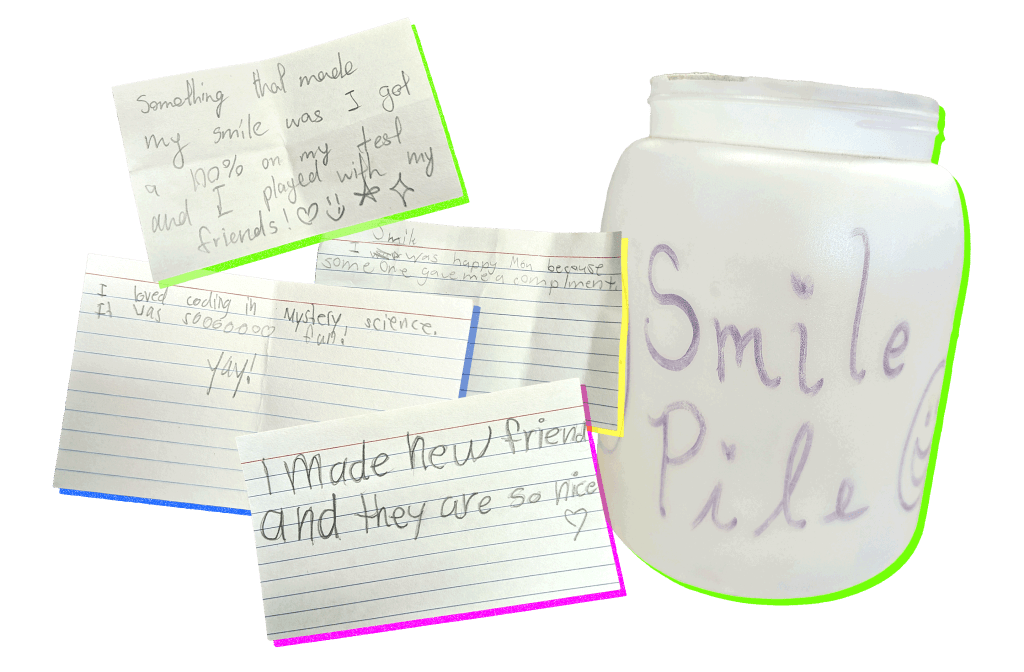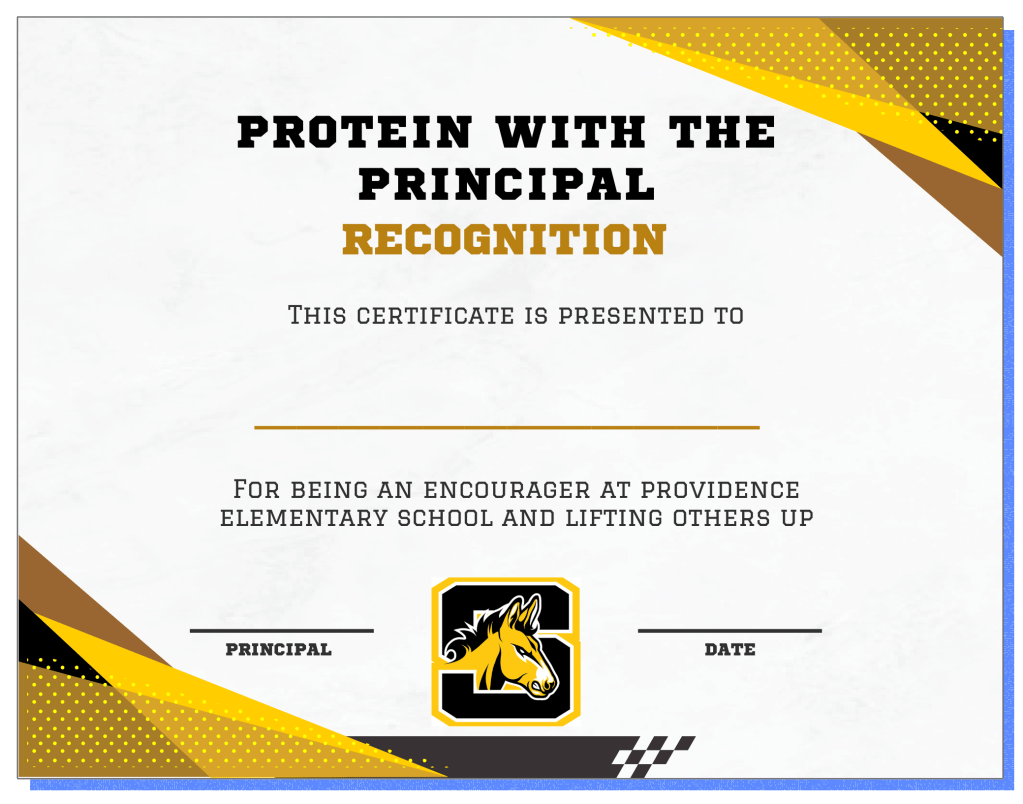13 Ways to Celebrate Students’ Small Wins and Build Motivation
In pursuit of big gains, students’ smaller successes can go unnoticed. Research suggests that’s a missed opportunity to spark motivation.
Your content has been saved!
Go to My Saved Content.Students often imagine that the path to academic success should be free of bumps and mishaps—a swift, direct journey to an A+. But the reality is that kids will inevitably face setbacks and progress can be gradual or uneven, leading many to struggle to maintain motivation over time.
The secret to sustaining motivation isn’t “setting big, lofty goals” but instead breaking tasks down into “small, manageable steps and celebrating progress along the way,” says high school English teacher Cathleen Beachboard. “This approach not only fosters a sense of achievement but also taps into the brain’s natural learning processes to help students build lasting, intrinsic motivation.”
As schools assess the success of their students (and students assess their own success), the smaller wins can easily be overlooked—and research suggests that’s a missed opportunity. In a 2024 study, 570 third- and sixth-grade students were asked to solve 10 challenging math problems. Half received an additional five easier problems—allowing students to experience a few moments of confidence-boosting success before they grappled with the tougher questions.
Though both groups ultimately had to tackle the same amount of difficult questions, the students who were given a few easier ones to start were twice as likely to look forward to taking on another set of challenging problems; having already experienced feeling competent on the earlier ones built enough motivation to persist despite the challenges ahead. “The psychology behind small wins is that success sets you up for the anticipation of further success,” writes Stephanie Farley, an independent school administrator. “Doing well can shape the expectation that you’ll do well again, causing you to act in ways that lead you to do well.”
From changing a pattern of behavior to handling a setback like a low grade with resilience, students make positive strides that often go unnoticed. Creating a culture that seeks out and celebrates these small wins is “vital to keeping students engaged for the long haul,” Beachboard says, helping them develop persistence and approach bigger challenges with a more positive, can-do attitude.
Here are 13 teacher-tested ways to shine a light on the wins your students might not even recognize themselves.
A positive phone call home: A quick three-minute phone call to share good news with a student’s family can transform a small success into a lasting memory, writes educational consultant Elena Aguilar. The reason to call home can be simple, she writes: “I just wanted to share that today when _____ came into my class, he said ‘good morning’ to me and opened his notebook right away. I knew we’d have a good day!”
All ages.
A ticket to the principal’s office: At Sam Houston Elementary School, when students demonstrate positive behaviors—honesty, responsibility, or consistent hard work on academics, for example—their teachers fill out a positive office referral form. Every Friday, the nominated students visit the principal’s office for a celebratory call to their family. Students get to bring home a copy of the referral to proudly share with caregivers.
Elementary grades.
Build a chain of successes: Throughout the course of the school year, paper chains—a series of interlocking paper loops—help students log and track small wins, says former school psychologist Laura Driscoll. “Have them write down their achievements [on each loop] and add them, slowly building the chain over time,” she writes. Nothing is too small—from remembering to do homework to keeping cell phones stashed away—and by the end of the year, they’ll have a physical record of their successes.
Elementary and middle grades.
Add it to the smile pile: Each week in Lory Peroff’s fourth-grade classroom when students find something to smile about, they write it down and submit it to the Smile Pile, a bucket students fill with the handwritten notes. If students include their name on the slip, Peroff knows they want to share publicly and their “smiles” are included during the weekly discussion circles. Anonymous slips are kept private. Recently one student celebrated a new connection—“I made a new friend. I am so happy”—while another hit a milestone: “I accomplished my WIG (wildly important goal) for quarter 3. Now I am a much faster typer than before. Yay!”
Elementary and middle grades.

Let students be experts: Teachers are the experts in the room, but they’re not the only ones, writes Julie Johnson, a senior lecturer at Ohio State University: “There are also twenty-some others who contribute valuable knowledge to our community.” Middle school teacher-librarian Shannon Engelbrecht often asks students if anyone knows how to perform a common tech task like creating a browser bookmark. With the student’s permission, she’ll encourage the class to check in with this student expert when they need help. The expert gets the small win of becoming an authority while “others may look to their peers as experts and aspire to be one themselves,” she says.
Elementary and middle grades.
Send a hopeful note: A stack of colorful notecards sits on high school English teacher Cathleen Beachboard’s desk year-round. When she sees progress—a generally quiet student asking a question in class, for example—she writes a quick Hope Note. “It might say something like, ‘I see how hard you’re working—it’s paying off! Keep going,’” she explains. She’ll leave the note on the student’s desk or slip it into their notebook when they’re not looking. “High schoolers may act cool, but they often save these notes,” she says.
All ages.

Spot excellence in action: Keep an eye out for a well-written turn of phrase or a particularly creative solution to a challenging problem, Peroff suggests. Consider a monthly recognition of an “Excellent Narrative Writing Piece” or “Clearest Explanation of Mathematical Thinking,” she writes. Key interpersonal skills, like “Most Cooperative Group Work,” also provide valuable opportunities for positive callouts. Rather than highlighting an individual student, this rewards specific skills and dispositions you wish to promote, providing “samples of excellence for students to strive toward.”
Middle and upper grades.
A surprise visit from the principal: An unexpected appearance from your principal can be pretty special. When students consistently arrive on time, display strong collaboration and communication, or work together to create a positive and productive work environment, schedule a time for your school leader to pop by and offer some well-deserved praise. Encourage students to get involved in the conversation when the principal arrives, sharing their reflections on what the class has collectively accomplished or improved upon.
Elementary and middle grades.
Many are receiving an 'award' for the first time in school. High schoolers! Some have been moved to tears.
Michael gray, cte teacher and counselor
Cheers to students’ gains: Every six weeks, teachers at California’s Long Beach Polytechnic High School nominate students who are improving in certain pre-selected areas such as attendance, increased effort, or positive attitude.
Nominated students then get to attend a “making gains” celebration and receive a certificate from the nominating teacher, as well as pizza and a fun swag bag. “The students’ reaction really is the best part,” says CTE teacher and counselor Michael Gray, who organizes the events. “Many are receiving an ‘award’ for the first time in school. High schoolers! Their reaction is gratitude, real pride, and they’ll show their parents or caregivers. Some have been moved to tears.”
Middle and upper grades.
End with a bang: Designate a day when students in your class will share their successes from the past unit. Simple snacks and drinks can make the occasion more festive, suggests staff developer Beth Moore: “Spread out blankets or plastic tablecloths around the classroom, outside on the playground, or even in the gym!” Students in an ELA class can read recent work where they really nailed the tone or mood, for example, while an art class might feature young artists talking through their most prized pieces.
All ages.
Stash small wins to celebrate later: With a school success chest, teachers can easily keep track of and highlight students’ small wins—students can even use it to highlight themselves. “Print out cards and pass them out to every member of your faculty,” writes Erin Lynch, an elementary school literacy specialist and learning facilitator. “Staff can add cards to the chest throughout the school year.” Each week during morning announcements, school leaders pull out a few cards to read, acknowledging everything from acts of service to athletic and artistic triumphs.
Elementary and middle grades.
Protein with the principal: Principal Zac Bauermaster’s school practically runs on fist bumps and high fives—especially on Fist Bump Fridays. But once a month, 18 students are nominated by their teachers for a special treat called Protein with the Principal.

Designed to recognize kids (one from each homeroom) who have been especially encouraging to their classmates, this breakfast is a big deal at the Pennsylvania school. “Protein makes us stronger, just like being an encourager builds each other up and makes Providence Elementary School a better place,” Bauermaster explains. “It's also focused on helping the kids eat healthier. You’d be amazed at how many kids love hard-boiled eggs!”
Elementary grades.
Catch students in the act: When a student does something “kind, thoughtful, or courageous and really wants to share,” Beachboard pulls out her polaroid camera and snaps a photo to display on the classroom’s “Caught You Being Awesome” wall. Alternatively, with a digital camera or cell phone, images collected could populate a slide show to be shared at some point during the year. “Students love seeing themselves up there—and it motivates others to step up too,” she says.
All ages.
